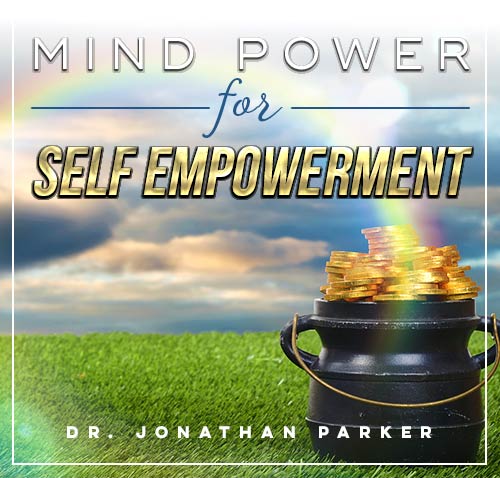Brain Wave Frequencies and Mind-Body Connection

Looking for more amazing products? Check out our online store and explore our collection here! Happy shopping!
Before diving in, please note: This post is for informational purposes only. If you’d like to know more about how we approach topics, feel free to check out our friendly Disclaimer Page.
Hey there, amazing readers! 
We’re committed to delivering quality posts, and your support (even just sticking around despite the ads) means everything to us. So, bear with us, and thanks for helping us keep the good vibes rolling. Now, on to the fun stuff!
TRANSLATE BUTTON AT THE END OF THE ARTICLE
Understanding Brain Wave Frequencies
Brain wave frequencies refer to the electrical patterns generated by the brain when in different states of consciousness.
These frequencies are measured in Hertz (Hz) and can provide insights into an individual’s mental and emotional state.
There are five primary types of brain waves: Delta, Theta, Alpha, Beta, and Gamma.
Each type of brain wave is associated with specific activities and mental states, ranging from deep sleep to heightened alertness.
Delta Waves (0.5-4 Hz): Delta waves are the slowest brain waves and are typically observed during deep, dreamless sleep.
They are crucial for restorative rest and the body’s healing processes.
Theta Waves (4-7 Hz): Theta waves are present during light sleep, deep meditation, and states of creativity and inspiration.
They are associated with deep relaxation and increased intuition.
Alpha Waves (8-13 Hz): Alpha waves are linked to a relaxed yet alert mental state.
They are commonly observed during meditation, daydreaming, and light relaxation.
Beta Waves (14-30 Hz): Beta waves are associated with active thinking, problem-solving, and concentration.
They are present in waking consciousness and can range from low to high frequencies.
Gamma Waves (31-100 Hz): Gamma waves are the fastest brain waves and are linked to high-level cognitive functioning, memory recall, and processing information rapidly.
The Connection Between Mind and Body
The mind-body connection is a powerful link between our psychological state and physical well-being.
Research has shown that our thoughts, emotions, and beliefs can have a significant impact on our physical health and vice versa.
When we experience stress, anxiety, or other negative emotions, our bodies can respond with symptoms such as muscle tension, elevated heart rate, and compromised immune function.
Psychoneuroimmunology: This field of study explores how psychological factors influence the immune system and overall health.
Positive emotions and a healthy mindset have been shown to enhance immune function and promote well-being.
Stress Response: Chronic stress can lead to an overactive fight-or-flight response, which can negatively impact the body’s systems.
Practices such as meditation, deep breathing, and mindfulness can help regulate the stress response and promote relaxation.
Emotional Regulation: By cultivating self-awareness and emotional intelligence, individuals can better manage their thoughts and feelings, leading to improved physical health and mental well-being.
Placebo Effect: The placebo effect demonstrates the power of the mind in healing the body.
Believing in the effectiveness of a treatment can trigger physiological changes that promote healing, even when the treatment itself is inert.
Exploring the Alpha Brain Wave State
The alpha brain wave state is characterized by a relaxed yet alert mental state, often associated with a sense of calm and peacefulness.
This state is ideal for creative thinking, problem-solving, and meditation.
When in the alpha state, the mind is in a state of receptivity, making it easier to access intuition and insights.
Benefits of Alpha Waves: Alpha waves have been linked to improved focus, stress reduction, enhanced creativity, and increased learning capabilities.
By entering the alpha state, individuals can tap into their inner resources and access a state of flow.
Techniques to Induce Alpha Waves: Practices such as deep breathing, progressive muscle relaxation, mindfulness meditation, and visualization can help induce the alpha state.
Listening to calming music or nature sounds can also facilitate the transition to alpha brain waves.
Alpha Brain Wave Training: Some biofeedback devices and neurofeedback programs are designed to train individuals to increase their alpha brain wave activity.
By practicing these techniques regularly, individuals can learn to access the alpha state more easily.
Alpha Waves in Healing: Research has shown that alpha waves play a role in pain management, reducing anxiety, and promoting overall well-being.
By harnessing the power of alpha brain waves, individuals can support their body’s natural healing processes.
The Impact of Beta Brain Waves on Focus
Beta brain waves are associated with active thinking, problem-solving, and focused attention.
When in the beta state, individuals are alert, engaged, and ready to tackle tasks that require cognitive effort.
However, excessive beta wave activity can lead to feelings of stress, anxiety, and overwhelm.
Benefits of Beta Waves: Beta waves are essential for tasks that require concentration, logical reasoning, and analytical thinking.
They play a crucial role in decision-making, planning, and goal setting.
Beta Waves and Productivity: By optimizing beta wave activity, individuals can enhance their productivity, stay organized, and meet deadlines more effectively.
Engaging in activities that stimulate beta waves can help sharpen mental acuity and boost cognitive performance.
Managing Beta Wave Overload: In today’s fast-paced world, it is common to experience an overabundance of beta wave activity, leading to feelings of restlessness and mental fatigue.
Techniques such as mindfulness, relaxation exercises, and time management can help individuals regulate their beta waves and restore balance.
Beta Waves in Sports Performance: Athletes often rely on beta waves to maintain focus, react quickly, and make split-second decisions during competition.
By training the mind to enter the optimal beta state, athletes can improve their performance and achieve peak results.
Harnessing Theta Waves for Relaxation
Theta brain waves are associated with deep relaxation, creativity, and heightened intuition.
When in the theta state, individuals may experience vivid imagery, deep meditation, and a sense of timelessness.
Theta waves play a crucial role in promoting relaxation, reducing stress, and enhancing overall well-being.
Benefits of Theta Waves: Theta waves are linked to deep states of relaxation, creativity, and emotional healing.
By harnessing the power of theta brain waves, individuals can access their subconscious mind and explore their inner world.
Theta Waves and Meditation: During meditation, individuals often enter the theta state, allowing them to connect with their inner wisdom, release emotional blockages, and experience profound insights.
Theta meditation can promote relaxation, clarity of mind, and spiritual growth.
Theta Waves in Dreaming: Theta waves are prominent during REM sleep, the stage of sleep associated with dreaming.
By understanding the role of theta waves in dreaming, individuals can explore the realm of their subconscious mind and uncover hidden truths.
Theta Healing: Theta healing is a holistic therapy that utilizes theta brain waves to access the subconscious mind and facilitate healing at a deep level.
Practitioners use the theta state to identify and release limiting beliefs, emotional traumas, and negative patterns that may be holding individuals back.
Delta Waves: The Key to Deep Sleep
Delta brain waves are the slowest and most profound brain waves, typically observed during deep, dreamless sleep.
Delta waves play a vital role in restorative rest, physical healing, and memory consolidation.
When in the delta state, the body undergoes essential processes that support overall health and well-being.
Benefits of Delta Waves: Delta waves are essential for deep sleep, cellular repair, and rejuvenation.
During the delta state, the body releases growth hormones, repairs tissues, and strengthens the immune system.
Delta Waves and Memory: Research has shown that delta waves play a crucial role in memory consolidation, helping individuals retain information, process emotions, and integrate learning experiences.
Deep sleep is essential for memory formation and cognitive function.
Improving Delta Wave Activity: By adopting healthy sleep habits, creating a relaxing bedtime routine, and ensuring a restful sleep environment, individuals can enhance their delta wave activity and promote deep, restorative sleep.
Practices such as mindfulness meditation, deep breathing, and progressive muscle relaxation can also support delta wave production.
Delta Waves in Healing: Deep sleep is a critical time for the body to repair and regenerate.
By prioritizing restful sleep and allowing the body to enter the delta state, individuals can support their physical, emotional, and mental well-being.
Delta waves are the key to deep, restorative sleep that nourishes the body and mind.
Gamma Waves and Cognitive Function
Gamma brain waves are the fastest brain waves and are associated with high-level cognitive functions such as memory recall, information processing, and problem-solving.
Gamma waves play a crucial role in cognitive flexibility, attention to detail, and overall brain function.
When in the gamma state, individuals may experience heightened mental clarity and focus.
Benefits of Gamma Waves: Gamma waves are essential for cognitive function, memory retention, and information processing.
They are involved in coordinating neural activity across different brain regions and synchronizing communication between neurons.
Gamma Waves and Learning: Research has shown that gamma waves are linked to learning new skills, adapting to new information, and retaining knowledge.
By optimizing gamma wave activity, individuals can enhance their learning capabilities and improve cognitive performance.
Gamma Waves in Meditation: Experienced meditators often exhibit increased gamma wave activity during deep states of meditation.
Gamma waves are associated with spiritual experiences, heightened awareness, and states of peak performance.
Enhancing Gamma Wave Activity: Activities such as mindfulness meditation, aerobic exercise, and engaging in creative pursuits can help boost gamma wave activity.
By cultivating a focused mind and engaging in activities that stimulate gamma waves, individuals can enhance their cognitive function and mental acuity.
How Brain Waves Influence Emotions
Brain waves play a significant role in influencing emotions, mood regulation, and psychological well-being.
Different types of brain waves are associated with specific emotional states, ranging from relaxation and happiness to stress and anxiety.
By understanding how brain waves impact emotions, individuals can learn to regulate their mental state and cultivate emotional resilience.
Theta Waves and Emotional Healing: Theta waves are linked to deep emotional healing, forgiveness, and letting go of past traumas.
By accessing the theta state through meditation or visualization, individuals can process unresolved emotions and cultivate inner peace.
Alpha Waves and Relaxation: Alpha waves are associated with relaxation, calmness, and stress reduction.
By entering the alpha state, individuals can promote emotional balance, enhance self-awareness, and experience a sense of inner tranquility.
Beta Waves and Anxiety: Excessive beta wave activity can lead to feelings of anxiety, restlessness, and overwhelm.
By practicing relaxation techniques, mindfulness, and deep breathing, individuals can calm the mind, reduce stress, and regain emotional equilibrium.
Gamma Waves and Happiness: Gamma waves are linked to positive emotions, happiness, and feelings of well-being.
By engaging in activities that promote gamma wave activity, such as meditation, creative expression, and gratitude practices, individuals can boost their mood and cultivate a sense of joy.
Balancing Brain Wave Frequencies
Balancing brain wave frequencies is essential for maintaining optimal mental health, cognitive function, and emotional well-being.
When brain waves are in harmony, individuals experience improved focus, creativity, and overall vitality.
By adopting practices that promote balance among different brain wave frequencies, individuals can enhance their quality of life and achieve a state of holistic wellness.
Mindfulness Practices: Mindfulness meditation, yoga, and deep breathing exercises can help regulate brain wave frequencies and promote a state of inner balance.
By cultivating present-moment awareness and tuning into the body’s signals, individuals can create a sense of harmony between mind and body.
Neurofeedback Therapy: Neurofeedback therapy is a non-invasive technique that uses real-time brain wave monitoring to provide feedback on brain activity.
By training individuals to modulate their brain waves and achieve optimal patterns, neurofeedback therapy can help improve focus, attention, and emotional regulation.
Brainwave Entrainment: Brainwave entrainment is a technique that uses auditory or visual stimuli to synchronize brain wave frequencies with external stimuli.
By listening to binaural beats, isochronic tones, or light therapy, individuals can entrain their brain waves and achieve desired mental states, such as relaxation or focus.
Healthy Lifestyle Habits: Ensuring an adequate amount of sleep, maintaining a balanced diet, staying physically active, and managing stress are essential for supporting optimal brain wave function.
By prioritizing self-care and adopting healthy lifestyle habits, individuals can create a foundation for balanced brain wave frequencies and overall well-being.
Techniques to Enhance Mind-Body Connection
Enhancing the mind-body connection is essential for promoting holistic health, well-being, and vitality.
By cultivating awareness of the body’s signals, thoughts, and emotions, individuals can develop a deeper understanding of their inner world and promote self-healing.
Various techniques can help enhance the mind-body connection and foster a sense of harmony between the mind and body.
Body Scan Meditation: Body scan meditation involves systematically directing attention to different parts of the body, noticing sensations, and releasing tension.
This practice can help individuals cultivate awareness of physical sensations, promote relaxation, and reduce stress.
Yoga and Tai Chi: Yoga and Tai Chi are ancient practices that combine movement, breathwork, and mindfulness to promote physical strength, flexibility, and mental clarity.
By practicing yoga or Tai Chi regularly, individuals can enhance their mind-body connection, improve posture, and cultivate a sense of balance.
Breathwork Techniques: Deep breathing exercises, such as diaphragmatic breathing, alternate nostril breathing, and box breathing, can help regulate the nervous system, reduce anxiety, and promote relaxation.
By focusing on the breath, individuals can connect with the present moment and enhance their mind-body connection.
Mindful Eating: Mindful eating involves paying attention to the sensory experience of eating, such as taste, texture, and aroma.
By eating mindfully, individuals can cultivate a deeper connection to their body’s hunger and fullness cues, promote healthy eating habits, and enhance digestion.
The Role of Brain Waves in Meditation
Meditation is a practice that has been used for centuries to cultivate inner peace, spiritual growth, and mental clarity.
Brain waves play a significant role in meditation, as different types of brain waves are associated with various stages of consciousness and states of awareness.
By understanding how brain waves influence meditation, individuals can deepen their practice, enhance their focus, and achieve a sense of mindfulness.
Alpha Waves in Meditation: During meditation, individuals often enter the alpha state, characterized by a relaxed yet alert mental state.
Alpha waves are linked to creativity, intuition, and deep relaxation, making them ideal for meditation practices that aim to quiet the mind and access inner wisdom.
Theta Waves in Meditation: Theta waves are prominent during deep states of meditation, where individuals may experience vivid imagery, heightened intuition, and spiritual insights.
Theta meditation can help individuals access their subconscious mind, release emotional blockages, and explore their inner world.
Gamma Waves in Meditation: Experienced meditators often exhibit increased gamma wave activity during deep states of meditation.
Gamma waves are linked to cognitive function, memory recall, and information processing, making them essential for enhancing mental clarity, focus, and awareness during meditation.
Delta Waves in Meditation: Delta waves are observed during deep, dreamless sleep and states of profound relaxation.
By cultivating delta wave activity during meditation, individuals can promote deep rest, physical healing, and emotional rejuvenation.
Delta meditation can support the body’s natural healing processes and enhance overall well-being.
Using Brain Wave Frequencies for Healing
Brain wave frequencies can be utilized for healing purposes, promoting physical, emotional, and mental well-being.
Various techniques, such as sound therapy, biofeedback, and mindfulness practices, can help individuals regulate their brain waves and promote healing at a deep level.
By harnessing the power of brain wave frequencies, individuals can support their body’s natural healing processes and enhance their quality of life.
Sound Therapy: Sound therapy involves listening to specific frequencies, such as binaural beats or isochronic tones, to entrain the brain waves and promote relaxation, focus, or deep sleep.
By incorporating sound therapy into their daily routine, individuals can access desired mental states and support their overall well-being.
Biofeedback: Biofeedback is a technique that uses real-time monitoring of physiological signals, such as brain waves, heart rate, or muscle tension, to provide feedback on the body’s response to stress.
By learning to modulate their brain waves through biofeedback training, individuals can reduce anxiety, improve focus, and promote relaxation.
Mindfulness Practices: Mindfulness practices, such as meditation, deep breathing, and body scan exercises, can help individuals regulate their brain waves and promote healing at a deep level.
By cultivating present-moment awareness and connecting with the body’s signals, individuals can release tension, reduce stress, and enhance their overall well-being.
Energy Healing: Energy healing modalities, such as Reiki, Qi Gong, or acupuncture, work to balance the body’s energy systems and promote healing on physical, emotional, and spiritual levels.
By aligning the body’s energy centers and clearing blockages, individuals can support their body’s natural healing processes and enhance their mind-body connection.

The Enlightenment Journey is a remarkable collection of writings authored by a distinguished group of experts in the fields of spirituality, new age, and esoteric knowledge.
This anthology features a diverse assembly of well-experienced authors who bring their profound insights and credible perspectives to the forefront.
Each contributor possesses a wealth of knowledge and wisdom, making them authorities in their respective domains.
Together, they offer readers a transformative journey into the realms of spiritual growth, self-discovery, and esoteric enlightenment.
The Enlightenment Journey is a testament to the collective expertise of these luminaries, providing readers with a rich tapestry of ideas and information to illuminate their spiritual path.
Our Diverse Expertise
While our primary focus is on spirituality and esotericism, we are equally passionate about exploring a wide range of other topics and niches 

To ensure we provide the most accurate and valuable insights, we collaborate with trusted experts in their respective domains 
Our blog originally focused on spirituality and metaphysics, but we’ve since expanded to cover a wide range of niches. Don’t worry—we continue to publish a lot of articles on spirituality! Frequently visit our blog to explore our diverse content and stay tuned for more insightful reads.
Hey there, amazing reader! 
Check out our store here and take a peek at some of our featured products below! Thanks for being awesome!












